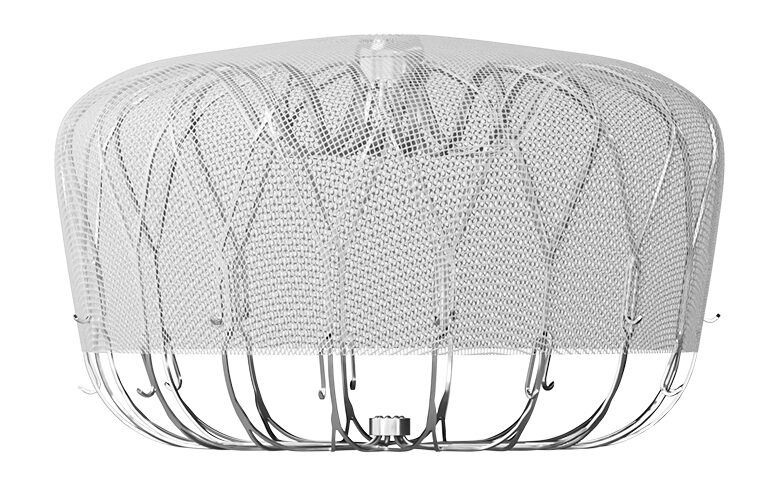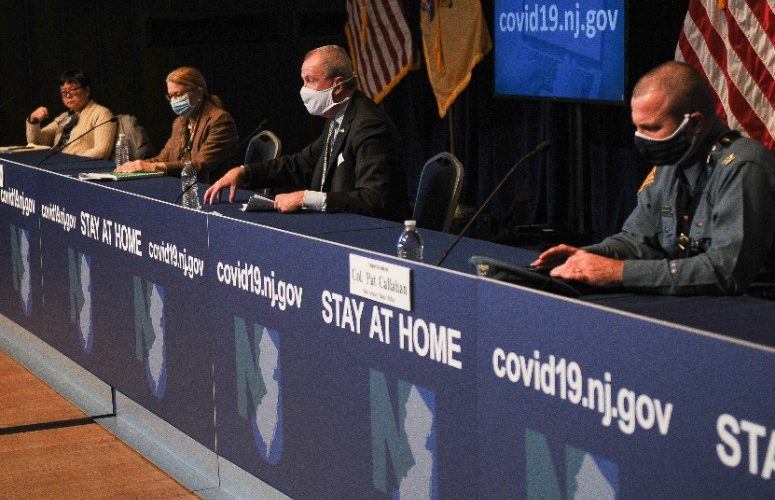
Fighting Breast Cancer
In recognition of Breast Cancer Awareness Month, the following article details how healthcare institutions in the state are combating an illness that will impact one in eight women in their lifetime.
By Ilene Dorf Manahan, Contributing Writer On Oct 15, 2021Next to skin cancer, breast cancer is the most common cancer among women in the US – and is the second major cause of cancer death in women, next to lung cancer. Nationally, one in eight women will be diagnosed with breast cancer in her lifetime, with the risk increasing with age (most are diagnosed after age 50). New Jersey is often reported among the top 10 states in the nation for breast cancer incidence and mortality.
However, since 1989, the number of deaths from breast cancer has been decreasing, and New Jerseyans are among those being saved by improved means of early detection. When cancers are small and easier to treat, targeted cancer research, multidisciplinary, state-of-the art treatment, and clinical trials are available at nationally recognized breast cancer centers located in the state.
“Breast cancer already is an emotionally charged disease – and it doesn’t travel well,” says Deborah Toppmeyer, MD, chief medical officer, director of the Stacy Goldstein Breast Cancer Center, and chief of medical oncology at Rutgers Cancer Institute of New Jersey. “However, there is no cutting-edge breast cancer service or treatment or clinical trial that can’t be accessed right here in New Jersey.”
The first line of defense in combating breast cancer is early detection: scheduling annual mammograms beginning around age 40 – but under 40 if a patient has a family history of breast cancer or a breast abnormality or concern.
Saint Peter’s University Hospital in New Brunswick, a clinical affiliate of Rutgers Biomedical and Health Services, has introduced Hologic® Genius ™3D Mammography™ to the diagnostic services available in its Women’s Imaging Center. As differentiated from traditional 2D mammography, the Genius 3D is designed to detect invasive cancers in women with dense breasts by delivering a series of detailed breast images layer by layer.
To complement the Genius 3D, Saint Peter’s also offers the Hologic® SmartCurve™, a curved compression paddle shaped more like a woman’s breast, that eliminates the compression of traditional mammography. Saint Peter’s is the only hospital in Middlesex County that offers the combination of Genius 3D Mammography with the SmartCurve feature.
Deanna Chin, MD, section chief of Women’s Imaging at Saint Peter’s, explains, “The ability to secure images with much greater clarity and detail means we will be able to detect tumors that previously went undetected until they had increased in size, and that we can deliver less invasive treatment options and better outcomes.”
If hereditary predisposition to breast cancer is suspected because of a family history of breast cancer or particular features of the cancer, state-of-the-art genetic testing can be conducted to identify mutations – or changes to particular genes that are involved and can predict an individual’s risk to cancer. Genetic profiling also can be done on the cancer itself to identify the type of cancer it is and implement treatment targeted at the specific disease.
“Years ago, breast cancer was considered ‘one disease,’ and virtually every breast cancer was treated similarly,” explains Rutgers Cancer Institute’s Toppmeyer. “We have since learned that breast cancers can be divided into different subclasses that require significantly different therapies. By identifying that subclass, we can target the most appropriate therapy to combat the disease.”
Connecting patients with clinical trials is a major goal at Rutgers Cancer Institute and RWJBarnabas Health for advancing knowledge about these subclasses. Further, in many cases, Toppmeyer notes, tumors can be shrunk with therapy, thereby requiring less radical surgeries.
In June, Rutgers Cancer Institute and RWJBarnabas Health, in partnership with the New Brunswick Development Corporation (DEVCO), broke ground for the state’s first freestanding cancer hospital, the Jack and Sheryl Morris Cancer Center. The 510,000-square-foot, 12-story facility, located on Somerset Street in New Brunswick, adjacent to the existing Rutgers Cancer Institute building and Robert Wood Johnson University Hospital, will provide patients with leading-edge cancer treatment and access to the latest technology and medicine – all under one roof. The hospital also will house state-of-the-art research laboratories, thereby expediting the transfer of groundbreaking discoveries from the laboratory directly to patients. The center is scheduled to open in 2024.
“This is a very exciting time in breast cancer research,” says Generosa Grana, MD, director of the MD Anderson Cancer Center at Cooper, in Camden, and a member of the New Jersey Commission on Cancer Research, which promotes research into the causes, prevention and treatment of cancer and serves as a resource to providers and consumers of cancer services. “It’s not only important to know whether one is at a greater risk of cancer through heredity, but also to understand the genetic changes that a cancer has acquired in its development, as all of those genetic alterations will help to explain the behavior of a cancer and can guide the selection of specific treatments for that cancer. Through genetic testing of the individual and genomic profiling of the cancer, we can identify the specific genetic abnormality and then, importantly, determine an appropriate course of treatment.”
MD Anderson Cancer Center at Cooper’s dedication to fostering a strong and healthy community is supported by its Cancer Outreach, Education and Screening Program. Among its cancer prevention and early detection efforts, free cancer services are provided to uninsured and underinsured Camden County residents at conveniently located radiology and clinic sites.
Deborah M. Capko, MD, surgical oncologist at Memorial Sloan Kettering Cancer Center (MSK), notes that since any surgery comes with its own risks, MSK is focusing on “de-escalating” surgery – when possible, doing less surgery for certain cancers. For example, not all breast cancer surgery requires the traditional axillary node dissection, which has the potential to cause lymphedema (arm swelling). In many situations, only a sample lymph node is removed, and, in some cases, this is unnecessary altogether. “Ongoing clinical trials are guiding us to learn when less is more,” Capko says.
Nationally, increasing numbers of women are able to preserve the breast with lumpectomy and radiation. When mastectomy is needed, Dr. Capko often can substitute a traditional mastectomy with nipple-sparing, skin-sparing mastectomy, a procedure in which the skin envelope of the breast is preserved, allowing for a more optimally cosmetic outcome. This requires close collaboration between the breast surgeon and the plastic and reconstructive surgeon.
The world’s largest private, non-profit cancer center, MSK offers its internationally recognized cancer care services throughout New Jersey, with outpatient locations in Montvale (Bergen County), Basking Ridge (Somerset County), and Middletown (Monmouth County), thereby covering virtually all of northern and central New Jersey. In addition to providing outpatient cancer care such as chemotherapy, radiation treatment, interventional radiology, and radiology services such as screening mammography, ultrasound, MRI, CT and PET imaging, MSK Monmouth is the first MSK facility outside of Manhattan to house operating rooms, where same-day outpatient surgeries are performed. More complex surgeries or specialized care are typically performed at and coordinated with MSK in New York, with follow-up doctor visits and patient care conducted in New Jersey.
State residents also can learn more about their own risk for breast cancer through MSK’s RISE program – Risk Assessment, Imaging, Surveillance and Education. Developed for people at increased risk for cancer, a team of highly collaborative healthcare professionals analyzes factors to determine whether a person is at an increased risk for breast cancer. If they are, the healthcare team can customize a long-term surveillance plan that includes educating their patient on ways to reduce their risk and monitoring for any signs of breast cancer development, to catch and treat it as early as possible.
Meanwhile, the Trinitas Comprehensive Cancer Center (TCCC) in Elizabeth is the first cancer treatment facility in the state to offer AccuBoost, an image-based technology that takes the guesswork out of radiation therapy. The procedure helps doctors more accurately apply localized radiation to affected areas in patients with early-stage breast cancer, potentially improving outcomes by sparing as much healthy tissue as possible. Patients with early-stage breast cancer who have undergone a lumpectomy are prime candidates for this novel technology.
AccuBoost displays the tumor bed and lumpectomy cavity as the breast is immobilized and compressed through mammography. Using the image as a guide, doctors then implant a sealed radiation source within the tissue near the affected area, allowing targeted delivery of vertical and horizontal radiation. By showing the site where cancer was removed and the surrounding breast tissue area, AccuBoost helps doctors treat the extent of the breast cancer while targeting the affected tissues and identifying areas where cancer could recur.
“AccuBoost offers increased options for breast conserving radiation therapy with high precision partial treatment that optimally spares the surrounding non-cancer affected normal tissues,” said Clarissa Henson, MD, chair of Radiation Oncology at Trinitas. “It is important that we offer breast cancer patients customized treatment.”
Additonally, Paramus-based Valley-Mount Sinai Comprehensive Cancer Care is the only hospital on the East Coast, and only the fourth in the nation, using the latest generation of capabilities available in the newest iteration of ExacTrac Dynamic from Brainlab.
This technology allows clinicians to be more accurate in delivering treatment by incorporating additional views from both outside and inside a patient’s body. Doctors will be able to see a patient’s shape, temperature, movement and anatomy in real-time with the help of high-resolution surface and thermal imaging.
The technology will be particularly helpful in treating breast cancer.
“This evolution in technology can account for a patient’s breathing and only delivers treatment when their chest is in the correct position, which avoids damage to healthy tissue. As a patient breathes, the treatment will pause until the body returns to the original position,” explains Dr. Thomas Kole, a radiation oncologist at Valley.
Steps both women and men can take to minimize their risk of breast cancer include following a healthy diet, maintaining a healthy weight, exercising and limiting alcohol. Certain populations merit particular attention. Hereditary factors are particularly important for people of Ashkenazi (Eastern European) Jewish descent, as one in 40 will carry a genetic abnormality predisposing them to breast cancer. African-Americans have a higher death rate (39%) due to breast cancer than that of the general population of Caucasian women. Meanwhile, younger African-American and Hispanic/Latina women are more commonly diagnosed with aggressive breast tumors that are less responsive to standard cancer treatments and, therefore, result in higher death rates. In all cases, early detection is most important.
To access more business news, visit NJB News Now.
Related Articles:





